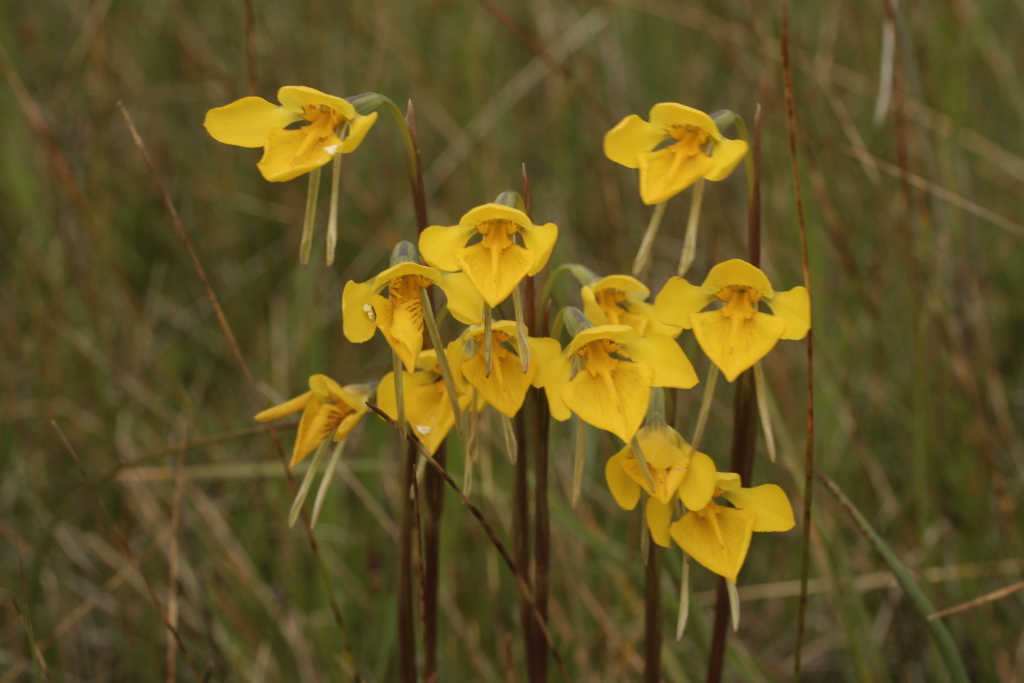Diuris behrii
Schltdl. Golden CowslipsFlowering plant to 50 cm tall. Leaves usually 3–6, narrow-linear, grass-like, to 20 cm long, in loose, erect tussock. Flowers 1–4, drooping, bright yellow with an orange labellum, dark streaks present on both sides of labellum and dorsal sepal; pedicel enclosed within bract; dorsal sepal projected forward or obliquely erect, ovate, to 17 mm long, margins sometimes irregular; lateral sepals obliquely defiexed, parallel, linear-lanceolate, to 25 mm long, greenish; petals spreading or drooping, to 25 mm long, claw green, lamina narrow-ovate or elliptic, yellow. Labellum to 28 mm long, orange, often with brownish streaks; lateral lobes small, oblong, with irregularly toothed margins; mid-lobe broadly wedge-shaped, outer margins often irregular, callus of 2 widely separated, pubescent, longitudinal ridges, extending onto base of mid-lobe, uniting and continuing as single ridge nearly to the apex. Flowers Sep.–Nov.
MuM, Wim, VVP, VRiv, GipP, Gold, CVU, DunT, NIS, HSF, HNF, VAlp. Also SA, NSW, ACT. Locally common in grassland and open woodland mostly in western Victoria.
Diuris behrii flowers later than D. chryseopsis in Victoria, and has larger, more boldly striped flowers.
Natural hybrids are known to occur with D. pardina.
Diuris amabilis D.L.Jones was segregated for plants with wholly yellow, unstreaked flowers and with the midlobe of the labellum lacking a distinct basal neck 3.5–5 mm long. It is reported as occurring from Tooboorac in central Victoria to Wodonga in the north-east (Jones 2020). Owing to the existence of herbarium specimens of apparent intermediate morphology and coloration, and the tendency for D. behrii populations to consist of plants with flowers of varying form and size, it is here treated as a synonym of D. behrii, but more critical analysis of field populations may support the recognition of D. amabilis as a distinct species.
Entwisle, T.J. (1994). Orchidaceae. In: Walsh, N.G.; Entwisle, T.J., Flora of Victoria Vol. 2, Ferns and Allied Plants, Conifers and Monocotyledons, pp. 740–901. Inkata Press, Melbourne.
 Spinning
SpinningSynonyms
Jones, D.L. (2020). Two nw species of Diuris from Eastern Australia. Australian Orchid Review 84(6): 30–35.



